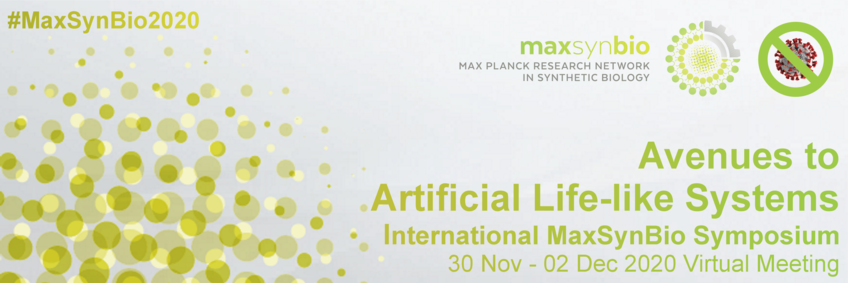
#38 - Development of a NAD+ regeneration module for the synthetic cell
Minhui Wang (Max Planck Institute for Dynamics of Complex Technical Systems, Magdeburg)
Tuesday, 01 Dec 21:15 - 22:00 CET
Access to the BigBlueButton rooom for this Mini Talk via the lists for Monday and Tuesday.
Please make yourself familiar with BigBlueButton before you join the Mini Talk - read the instructions.
Abstract
Title: Development of a NAD+ regeneration module for the synthetic cell
Author(s): Minhui Wanga, Tanja Vidakovic-Kocha, Ivan Ivanova, Kai Sundmachera,b
Affiliation(s): aMax Planck Institute for Dynamics of Complex Technical Systems, Magdeburg, Germany; bDepartment of Process Systems Engineering, Otto-von-Guericke University Magdeburg, Germany
Abstract: With bottom-up approach to synthetic biology, we are trying to develop an artificial synthetic biological system with minimal but essential components in order to fulfill the main tasks as a cell –metabolism, growth, and replication. The synthetic cell would be constructed and functionalized with different essential modules. Compartmentalization as the important membrane structure to separate biochemical processes is developed with different compositions for different modules. Nicotinamide adenine dinucleotide (NAD) is an important redox cofactor, related to the ATP management and many enzymatic metabolic reactions in a living cell. Developing a NAD regeneration module is essential to power and keep the continuous running of the synthetic cell. As a little step, a NAD+ regeneration module based on a transmembrane mediator, TCNQ, was developed in POPC lipid vesicles (~200nm) in a controlled manner. Later, this module based on TCNQ was investigated in synthetic compartments with different compositions including POPC and/or biomimetic PDMS-g-PEO polymer. The results suggested that hybrids with POPC/PDMS-g-PEO molar ratio of 1:4 were the most efficient for NADH oxidation at nanoscale. Furthermore, this module in synthetic vesicles was confirmed in micron scale via confocal laser scanning microscopy and fluorescence lifetime imaging microscopy by scaling up to biologically relevant and optically accessible dimensions.